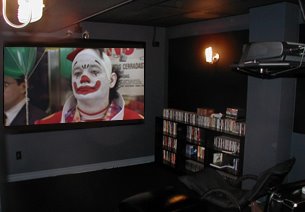KBT Presents: THE PRESIDENT'S LAST BANG

The first striking thing about The President’s Last Bang is how successfully it combines genres which should be completely at odds with one another. The political bio-pic does not in my mind seem to be a natural fit with black-satire or a highly stylized violent action film (to say that it feels like gangster film is not a stretch, and probably intentional). The near-slapstick comedy elements would not at first thought, mesh with the ensemble drama structure. And, a sizable portion of the film is scored to a sweet Parisian-sounding upbeat tempo (think Amelie or Belleville Rendez-Vous)!
Im Sang-Soo directs the film with such bold and brazen confidence that his success here feels like a forgone conclusion from the first planning meeting (and re-inventing one of the most controversial events of 20th century South Korea as edgy entertainment is no small order). It seems one of the key strengths of the current heat of South Korean cinema is the fact that directors such as Im Sang-Soo, Jeong Jun-hwan (Save the Green Planet) and Bong Joon-ho (Memories of Murder) are stirring the pot simply by mixing ingredients, however unintuitive, so well.
First, take the perfectly simple structure of introducing the rather large ensemble of players, then carrying out the plan, then watching the fallout. But with each gamepiece-style advance of the plot, there are more than double the amount of character building moments integrated into the narrative. Second, the confidence behind the camera shows with each set up perfectly exploiting the grammer of cinema: The plotting moments are Soderbergh-style (but now quite ubiquitous) shakey-handheld camera. Two Enka-performances filmed with extended tracking shots capture the complicated mood of the scene perfectly. The initial violence of the coup is suitably chaotic (like the beginning of the highly underrated Narc); the silence afterwards has the camera stalk the house like a ghost. And the closing quarter of the film is filmed in medium and long shots (often with the camera positioned from above) to indicate the powerlessness of key players to contain what they have unleashed (soon thereafter, swallowed by entropy).
On October 26 1979 South Korean President Park Chung-hee was brutally overturned by a political coup from his own Ministry of the Interior (KCIA to be more exact). At the risk of sounding like a dunce (and to call my Korean history passable would be quite a charity), the man was like Michael Eisner who brought Disney out of the ashes of a difficult time through a controversial series of actions. But after peaking, began the inevitable decline of the Mouse House simply by being in power too long, defending his position, surrounding himself with yes-men, and not understanding how he was well past his sell-before date. In short, he had become a dictator. Before continuing an analogy which would likely get me in trouble, the key difference being that there were a lot more lives affected by Park Chung-hee than Michael Eisner. The President’s Last Bang chronicles the players, the night of the coup, and the fallout with intelligence, grace, and unpredictability. At times, it felt a bit like this was Oliver Stone’s Natural Born Killers done so right (where Stone went so wrong). Im Sang-Soo allows us to indulge in the decadence of the regime, going so far to open the film with bare breasts and a read-aloud smutty novel, so we are disgusted by it. He lets us tag along with the violence so we can try unsuccessfully to get some visceral joy, but instead see the horrific idiocy of it all. And most of all, he allows the conviction of the characters, even (perhaps especially) when they are completely off-base, to shine though the glossly cinematography. And this is all done along with the bitingly black humour typically seen in war satires such as Dr. Strangelove, M*A*S*H, Catch-22 or the more recent Buffalo Soldiers. Kim Jae-kyu's coup is done seemingly by the seat of his pants; a violently sudden improve, and revolution comes in between his strained bowel movements and extreme bad breath. How is that for flattery of democracy? And yet South Korea did and has continued its upward climb as a country afterwards (and as a cinema!).
Baek Yoon-Shik, who gets the most screen time as Kim Jae-kyu is an absolute marvel (and the role has a lot of meat to chew on). The entire ensemble from the President (a subtle pitch-perfect Song Jae-Ho) to the politicos to the grunts (hilariously unarmed when it matters most it seems), the entertainment and the household staff, there is not a weak performance. Further noteworthy is the doorman of the Blue House who presides over the massacre and clean-up like a silent deity.
Perhaps at its most ironic, The President’s Last Bang shows a political coup for democracy and never once gives face to ‘The People.’ Here the masses seem as much or more to be a construct than the creaky and corrupt system of government. Arguably, the one character would could stand-in for ‘The People’ gets the harshest and most angry end of the stick in the film’s penultimate remarks.
Come out Tuesday night for one of the best pieces of cinema of 2005, and that includes not just South Korea, a countries cinema I'm rather fond of at the moment, but anywhere around the world. Drinks at 8pm, Showtime at 8:30pm.



